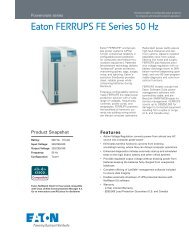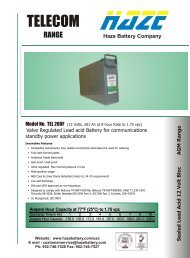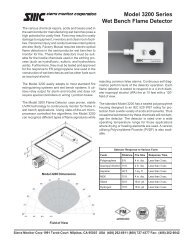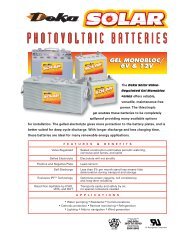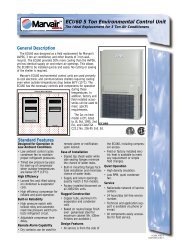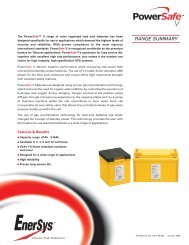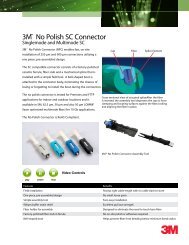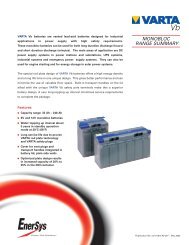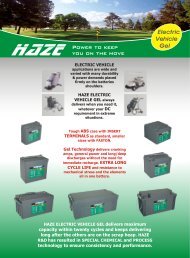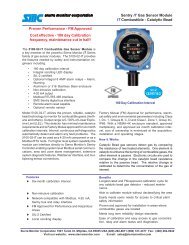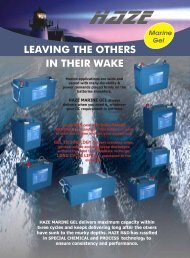NCCP - Ieeco.net
NCCP - Ieeco.net
NCCP - Ieeco.net
You also want an ePaper? Increase the reach of your titles
YUMPU automatically turns print PDFs into web optimized ePapers that Google loves.
Governing Standards<br />
HBL NIFE Power systems Ltd's batteries conform to Indian Standard IS 10918 and other relevant international<br />
standards such as IEC, DIN, BS, KS, etc<br />
Batteries are tested by third party, Canadian Standards Association for IEC 60623 standards.<br />
System Guarantee<br />
We have a full-fledged power electronics division which designs & manufactures chargers of any rating and<br />
configurations, in both thyristorised and SMR technologies. This will give our customers the added<br />
advantage of single point solution and system guarantee.<br />
Electrical Performance Characteristics<br />
Nickel Cadmium pocket plate batteries are the most reliable and rugged batteries available today. They can<br />
withstand to a great extent any type of abuse like overcharge, deep discharge, even accidental reverse charge<br />
and can be stored in any state of charge<br />
Charging<br />
These batteries can be charged by any known method and available charger like taper charger, constant<br />
current charger, constant voltage charger, float or trickle charger. A dual mode charger which will recharge<br />
a discharged battery at constant current and high<br />
voltage boost mode and then bring it to constant potential float mode at low voltage to keep the battery in<br />
fully charged condition, is ideal to get the best performance.<br />
Current limit - max. 0.2C A<br />
5<br />
Float voltage - 1.40 to 1.42 V/Cell<br />
However, if single mode charger is already available, like in old systems or in locomotives, the battery can<br />
be operated with constant voltage charging.<br />
Recommended Charging voltage setting: 1.45 to 1.50V / Cell.<br />
Discharge Performance<br />
The rated AH capacity of a nickel cadmium battery is defined as the Ampere Hours available at 5 hour rate of<br />
0<br />
discharge to 1.00V/Cell end voltage at 20 C after charging at constant current of 0.2C 5 rate for 8 hours.<br />
However, the performance or the actual AH available from particular cell type depends on the rate of discharge,<br />
cell end voltage, temperature, type of charging, state of charge, etc.<br />
The discharge performance table in this document gives the amperes available for the cell type for different<br />
durations and cell end voltages. These data are true for standard charge of constant current at 0.2C rate for<br />
5<br />
8 hours, rest and temperature conditions and for new cells.<br />
Also discharge performance data after long term float with constant voltage charging is provided.<br />
If the actual conditions differ from standard, the expected performance will be different. Our application<br />
engineering department will provide the details and further help you in selecting the optimum battery type for<br />
your requirement.<br />
2



